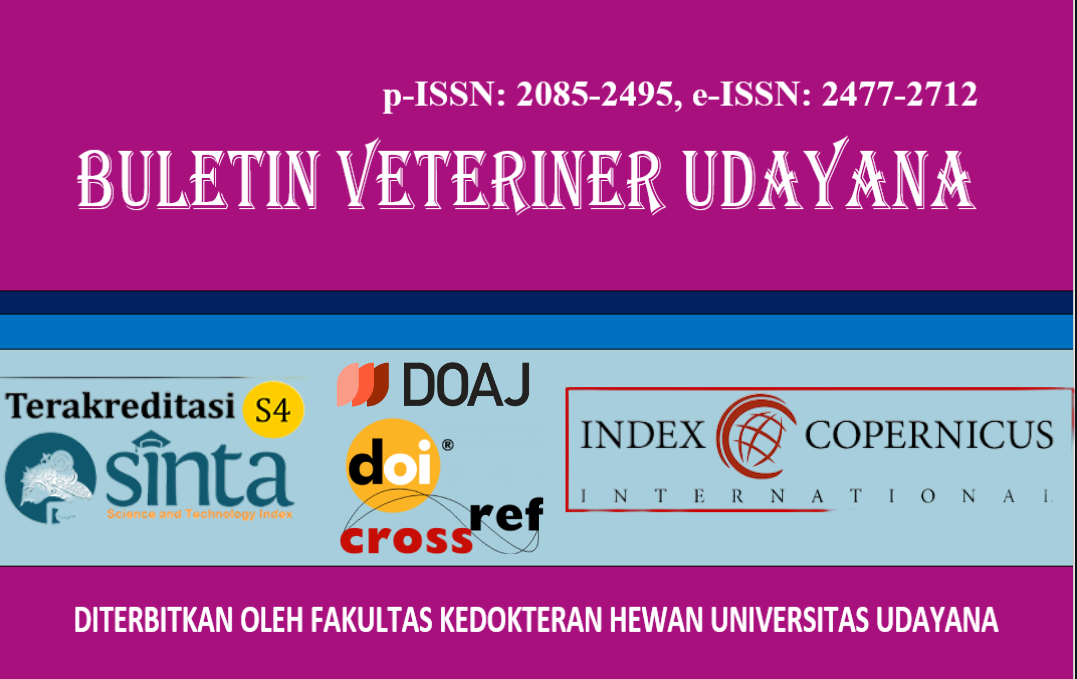CASE OF COCCIDIOSIS IN BROILER CHICKENS AT A FARM IN BENOA VILLAGE, BADUNG REGENCY
DOI:
https://doi.org/10.24843/bulvet.2025.v17.i01.p16Keywords:
Broiler, chicken, Eimeria spp, coccidiosis, Chlamydia sppAbstract
The subject of this case study is a 28-day-old broiler chicken from a farm located in Benoa, South Kuta District, Bali. The chicken was reported to exhibit clinical symptoms such as weakness, isolation from the flock, loss of appetite, and bloody feces. This study aims to analyze the anatomical pathology, histopathology, and laboratory findings to establish a definitive diagnosis of the disease affecting the chicken. Data collection included signalment, anamnesis, epidemiological investigation, and parasitic examination, which were then analyzed qualitatively in a descriptive manner. Necropsy findings after the chicken's death revealed congestion and hemorrhage in the small intestine, as well as bleeding with distension in the cecum. Histopathological observations showed necrosis of the cecal mucosa, the presence of schizonts, inflammatory cell infiltration, and the identification of macrogametes and microgametes. Qualitative fecal examination identified schizonts of Eimeria spp. Based on clinical, pathological, and laboratory analyses, it was concluded that the chicken suffered from coccidiosis.




